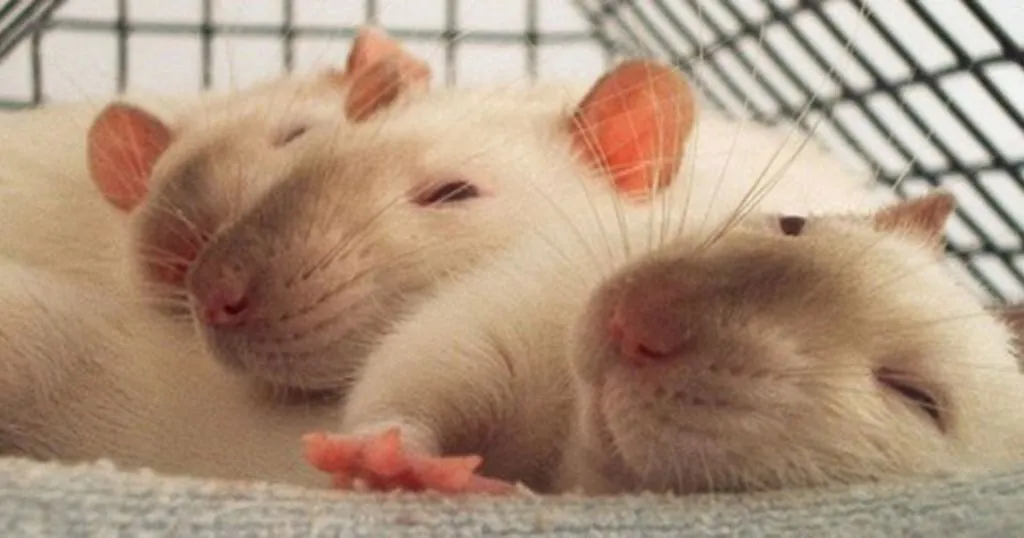How environmental enrichment reduces the effects of stroke
Some research requires animals to be studied in groups. For this it is very useful to have video tracking software that can automatically track the behavior of multiple animals simultaneously.
Posted by
Published on
Thu 01 Aug. 2013
Topics
| Environmental Enrichment | EthoVision XT | Morris Water Maze | Rats | Social Behavior Research | Stroke | Video Tracking |

A study of environmental enrichment as possible brain tolerance inducing factor for strokes
Some research requires animals to be studied in groups. Of course, this is evident in social interaction studies, but it is also done simply to study each individual’s behavior while they are in a group. In both cases, it is very useful to have video tracking software that can automatically track the behavior of multiple animals simultaneously. Xie et al. recently published a study which shows just that.
Research on ischemic stroke
The study of Xie and his colleagues focuses on strokes. A stroke has a high impact on the individual that suffers from one, as well as on society. The rapid loss of brain function due to insufficient blood flow causes a deficiency in oxygen. This can have a number of consequences, varying from minor to major, such as memory loss, paralysis, or inability to speak. Most strokes are ischemic strokes, meaning that they are caused by a blood clot.
Brain tolerance to stroke
Evidence shows that brain ischemic tolerance (BIT) can induce a greater tolerance to subsequent injury after stroke, meaning that specific experiences prior to stroke might help in lessening its effects. Xie and his colleagues examined the possible neuroprotective effects of environmental enrichment, prior to cerebral ischemia in adult male rats.
A stroke model in rats
Rats were divided into three groups. The first group was reared under standard conditions: 4 animals per group in standard cages with each animal receiving sham surgery. The second group was also reared under these conditions, but received surgery (arterial occlusion) resulting in cerebral ischemia. The third group was housed in groups of six in an enriched environment containing barrels, ladders, boxes, and more before receiving the same arterial occlusion surgery.
Behavioral testing
The study involved a couple of tests, including behavioral tests, such as the testing of motor skills, learning and memory in a Morris water maze test, and locomotor activity. The locomotor experiment was performed both before and after surgery. Activity and movement of each animal was measured automatically with EthoVision XT video tracking software, while animals were housed in groups.
Tracking multiple animals simultaneously
For tracking multiple animals simultaneously, researchers used EthoVision XT in combination with the Social Interaction Module. This module allowed researchers to track the behavior of all individuals in the same cage. While this module originally is designed to measure interaction between animals, it is just as useful to simply measure other behaviors of each individual. In this case the variables of interest were: distance moved, velocity, duration of mobility, and frequency of mobility.
With or without color markers
Researchers used color markers to easily identify the animals, but it is also possible to do this type of research with EthoVision XT without color marking the individuals.
Environmental enrichment reduces effects of stroke
The rats that were reared in an enriched environment showed fewer neurological deficits as a result of the arterial occlusion, when compared to the rats that were reared in standard cages. While there was no difference found morphologically, environmental enrichment did prove to enhance a variety of motor skills following the ischemic stroke surgery. Spatial learning and memory locomotor activity deficits were also attenuated by the environmental enrichment.
Diminishing the effects of a stroke
The results of Xie and his colleagues show that enriched rearing conditions prior to ischemia robustly increased locomotor activity. This implies that environmental enrichment and the increased levels of activity it caused act as a kind of protection against the consequences of stroke, effectively facilitating a better recovery from brain injury.
Read more
- Xie, H.; Wu, Y.; Jia, J.; Liu, G.; Zhang, F.; Zhang, Q.; Yu, K.; Hu, Y.; Bai, Y.; Hu,R. (2013). Enriched environment preconditioning induced brain ischemic tolerance without reducing infarct volume and edema: the possible role of enrichment-related physical activity increase.Brain Research, 1508, 63-72.
Related Posts

How to analyze different characteristics of olfaction in rodents

Why wolves cry out for their friends

